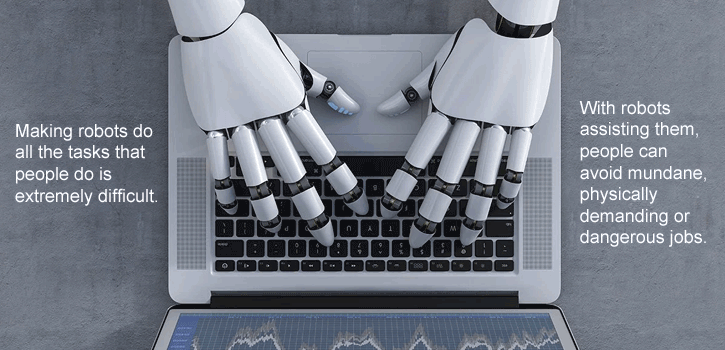Start prepping to welcome robots at workplace
The lack of skilled IT workers is hurting the deployment of emerging technology, according to a new survey from Gartner. In areas from cloud to cybersecurity, this crisis is expected to last for years to come.

With robotics making great
strides and more companies recruiting robots into their workforce, it is time
IT managers started prepping for changes coming their way. Introducing robots
isn’t as simple as getting a fleet of robots and setting them loose in the
office building. It requires careful consideration to how the technology would
affect the existing workforce and processes, and what kind of changes are
needed to integrate them with the existing ecosystem. IT heads and business
leaders should work closely to draw a plan of action to do this.
Unlike most other
technologies, robots affect the real world directly. Managing them efficiently
and keeping them secure from attacks, requires a whole new set of skills and
mind-set in IT managers. After all, robots will throw challenges they have not
dealt with before.
Bring
in new skills
Large companies that are
gearing up to introduce robots into their operations should consider hiring a
Chief Robotics Officer. A CRO would be responsible for drawing and implementing
the company’s robotics strategy. He would work with the CIO and the CTO to
integrate robotics into the existing processes and advice business heads on
‘robotizing’ more processes.
Companies bringing in robots
need IT workers with expertise in robotics- understanding of sensors, computer
visions, programming models and artificial intelligence.
Upgrade
skills
IT manager should upgrade
their skills – not just enough to get robots up and running but to understand
the new challenges and needs they would give rise to. Expertise in skills like
manipulation, navigation and locomotion, and perception and vision will give a
new edge to their careers.
Dispel
fears
There are a number of
speculations and fears about robots replacing humans at workplace. First, it is
hard to calculate how introducing robots will affect employee numbers.
Second, robots may displace
people but not replace them. Making robots do all the tasks that people do is
extremely difficult. With robots assisting them, people can avoid mundane,
physically demanding or dangerous jobs.
Instead, they can perform tasks that require human intelligence and
decision making. Yes, some jobs would be displaced, but employees in those jobs
would soon find themselves doing interesting jobs.
Business leaders should make
it clear to employees why robots are being introduced and how they would affect
their jobs. Employees will be more willing to allow robots if they see how they
help them with their work.
Train
employees
People may be anxious about
working with robots; they imagine robots going out of control or accidentally
hurting them.
The onus of training
employees on how to use robots and putting them at ease working with them is on
IT departments. IT trainers can begin with those who are digital native,
comfortable with working on computers and early adopters.
Think
infrastructure
IT managers have to assess the infrastructure
required to bring in and manage robots. This includes connecting the robots
safely and efficiently to the existing ecosystem i.e., other technologies,
processes, people and navigational facilities. The idea is to establish
infrastructure foundations to scale for the next 10 years.
Share your comments on this Article:(0)
Leave a Reply
